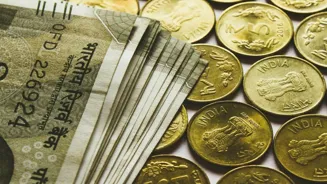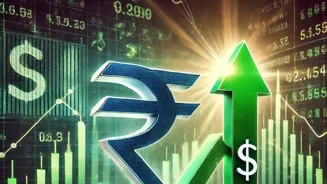Tensions escalated after US President Donald Trump threatened to "substantially" raise tariffs on Indian exports, citing India’s continued purchases of Russian crude oil.
Trump’s recent executive order raised tariffs for over five dozen countries, with a specific 25% hike targeting India.
The forex market reacted swiftly, with the rupee declining from Monday’s (August 4's) close of 87.66.
On Monday (August 4), it had already
“It was looking like a straight break of 88 at open, RBI came in and capped the move,” said a senior FX trader at a private bank.
Foreign institutional investors (FIIs) also continued to pull money out of Indian markets, offloading ₹2,566 crore worth of equities on Monday (August 4). The benchmark Sensex and Nifty both slipped around 0.25% amid broader
Meanwhile, the Reserve Bank’s Monetary Policy Committee (MPC) began its three-day meeting on Monday (August 4), with the outcome due on Wednesday (August 6). Investors are closely watching for any shifts in the interest rate stance or commentary on inflation and growth.
“Markets now await the RBI’s monetary policy, which is expected to drive heightened volatility. The rupee is likely to trade within a range of 87.25 to 88.00 in the near term," said Jateen Trivedi, VP Research Analyst - Commodity and Currency at LKP
Adding to the uncertainty, global crude prices edged lower as Brent futures fell to $68.57 per barrel after OPEC+ announced plans to raise output in September.
The dollar index, which tracks the greenback’s performance against six major currencies, rose marginally to 98.81.
The rupee had previously touched 87.95 in February 2025, and the 88 level remains a critical resistance point.
-With agencies inputs














